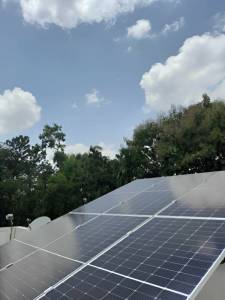Description
Govt. Subsidy & PM Surya Ghar Yojana: Harness the Sun's Power & Save Money
Are you looking to reduce your electricity bills, contribute to a greener future, and potentially receive government financial assistance? The PM Surya Ghar Yojana (also known as the Pradhan Mantri Kisan Urja Suraksha evam Utthan Mahabhiyan or KUSUM) and associated government subsidies make it easier than ever to install a rooftop solar power system for your home.
What is PM Surya Ghar Yojana?
The PM Surya Ghar Yojana is a flagship initiative of the Indian government aimed at promoting the adoption of solar energy in rural and urban areas. This scheme provides financial assistance to homeowners who wish to install rooftop solar power systems, making solar energy a more affordable and accessible option. The program strives to increase the country's renewable energy capacity and reduce its reliance on fossil fuels.
Key Benefits:
- Reduced Electricity Bills: Significantly lower or even eliminate your monthly electricity expenses by generating your own clean energy.
- Government Subsidy: Receive a substantial subsidy on the cost of your solar power system installation, reducing your upfront investment. The exact subsidy amount varies depending on your location, system size, and other factors (detailed below). Check with your local government body for the most up-to-date information.
- Environmentally Friendly: Reduce your carbon footprint and contribute to a cleaner, healthier environment.
- Increased Property Value: A rooftop solar system can enhance the value of your property.
- Reliable Power Supply: Enjoy a more reliable power supply, especially during power outages.
- Long-Term Savings: Solar panels have a long lifespan (typically 25 years or more), offering long-term cost savings and return on investment.
Subsidy Details:
The subsidy offered under PM Surya Ghar Yojana and other associated schemes is typically provided as a percentage of the total project cost. This percentage can vary depending on several factors, including:
- State/Union Territory: Subsidy rates differ across different states and union territories in India.
- System Capacity (kWp): The size of your solar power system (in kilowatts peak) will influence the subsidy amount. Larger systems often receive higher subsidies.
- Residential/Commercial: Subsidy schemes may vary for residential vs. commercial installations.
- Eligible Beneficiaries: Specific criteria may apply to determine eligibility for the subsidy, such as income levels or geographical location.
How to Apply:
The application process typically involves:
- Assessment of your energy needs: Determine the appropriate size of solar power system for your home.
- Finding a certified installer: Choose a reputable installer registered under the scheme.
- Submitting an application: Complete the application form with necessary documents and submit it to the designated authorities.
- Installation & Commissioning: The installer will install and commission your solar power system.
- Subsidy disbursement: Once the installation is complete and verified, you will receive your subsidy.
Important Note: It's crucial to contact your local government's designated energy agency or relevant authorities to obtain the most accurate and up-to-date information regarding eligibility criteria, subsidy rates, and the application process in your specific area. This description provides general information only and should not be considered official advice. Independent verification is recommended.
